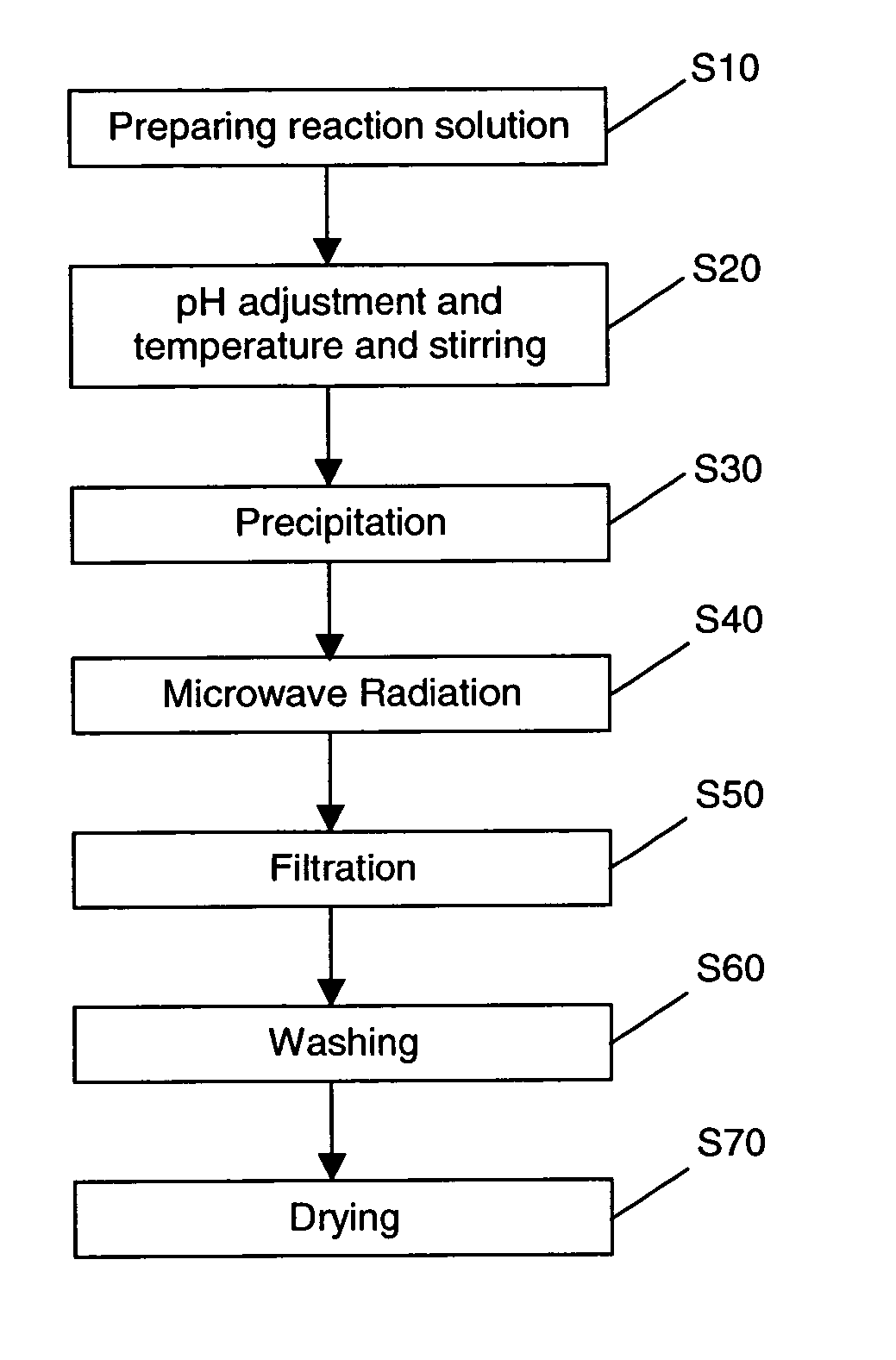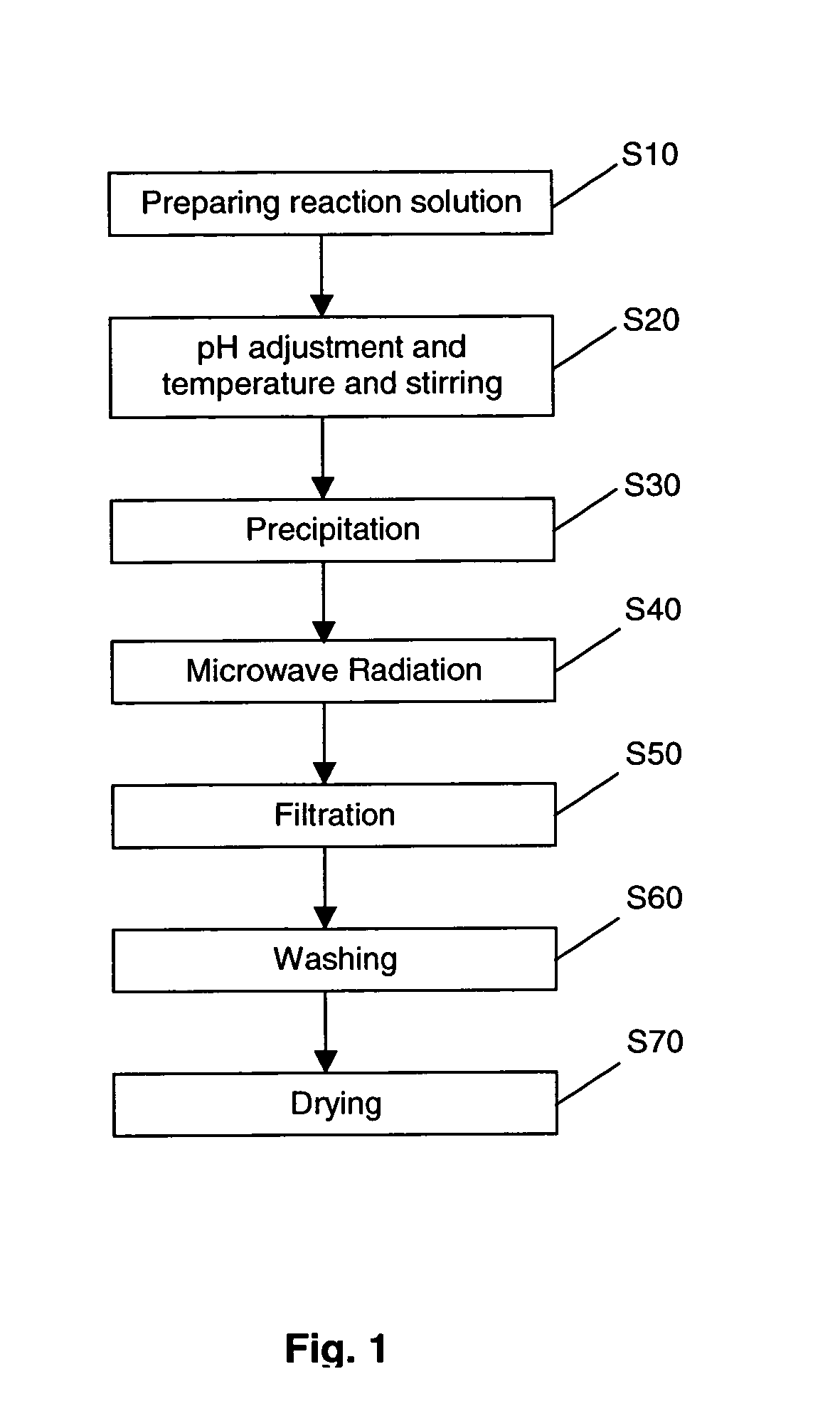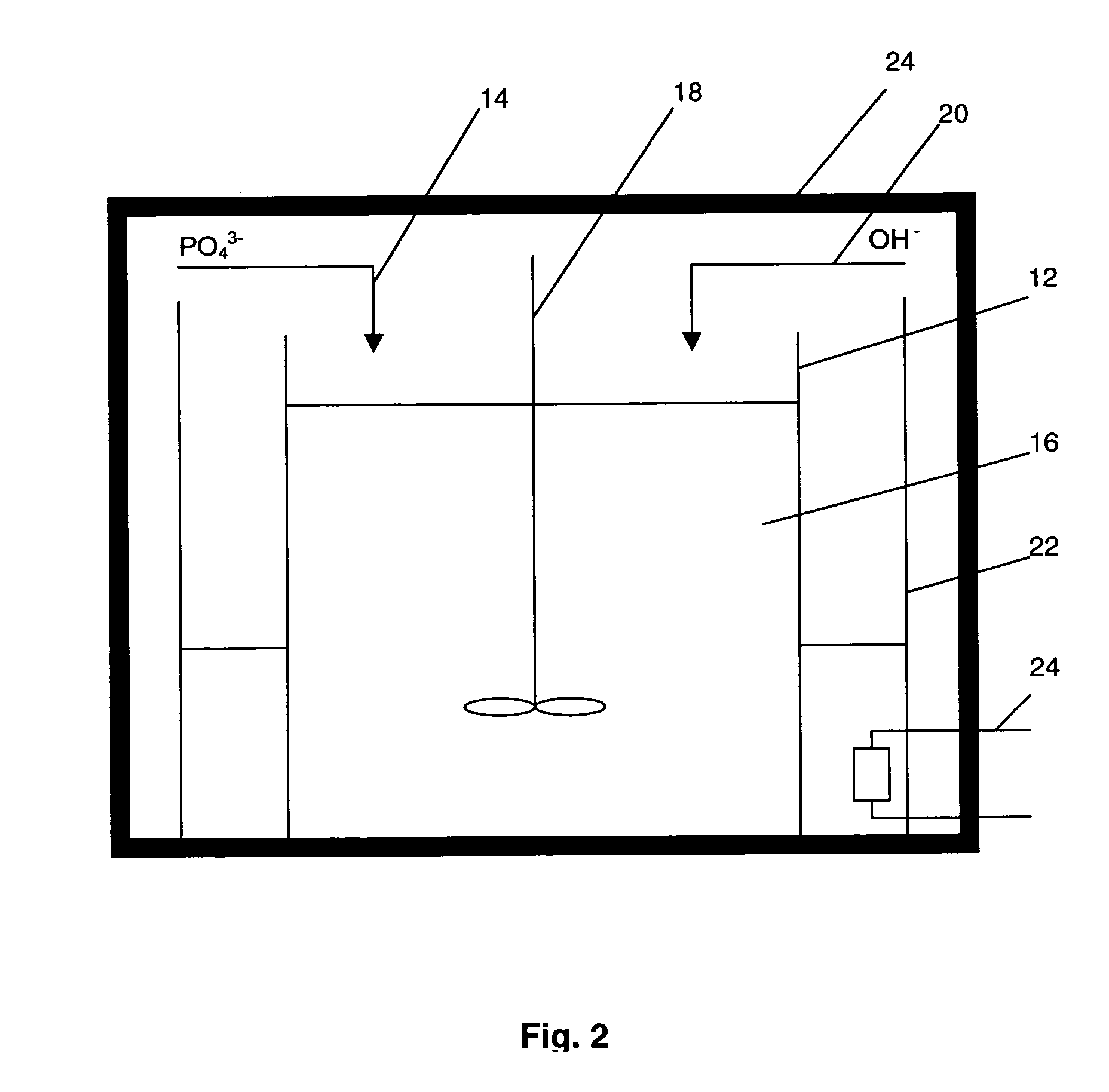Production of nano-sized hydroxyapatite particles
- Summary
- Abstract
- Description
- Claims
- Application Information
AI Technical Summary
Benefits of technology
Problems solved by technology
Method used
Image
Examples
example 1
[0073] A suspension of hydroxyapatite seed particles were formed as follows:
[0074] 300 ml of 0.3M aqueous ammonium hydrogen phosphate (NH4)2HPO4 was added dropwise to 300 ml of 0.5M aqueous calcium chloride (CaCl2) to form a reaction solution. The pH of the reaction solution was adjusted to 10 by adding concentrated NH4OH solution using a syringe. The reaction solution was maintained at a constant temperature of 60° C.
[0075] A suspension of hydroxyapatite seed particles precipitated from the reaction solution. The suspension of hydroxyapatite seed particles were aged for 24 hours and then subjected to microwave radiation of frequency 2450 Hz for 15 minutes. A stirring condition of 1000 rpm and temperature of 60° C. was maintained throughout the foregoing processes.
[0076] The suspension, after undergoing microwave radiation, was filtered, washed until there is complete removal of water soluble ammonium chloride. The nano-sized hydroxyapatite particles were then dried in a vacuum o...
PUM
 Login to View More
Login to View More Abstract
Description
Claims
Application Information
 Login to View More
Login to View More - R&D
- Intellectual Property
- Life Sciences
- Materials
- Tech Scout
- Unparalleled Data Quality
- Higher Quality Content
- 60% Fewer Hallucinations
Browse by: Latest US Patents, China's latest patents, Technical Efficacy Thesaurus, Application Domain, Technology Topic, Popular Technical Reports.
© 2025 PatSnap. All rights reserved.Legal|Privacy policy|Modern Slavery Act Transparency Statement|Sitemap|About US| Contact US: help@patsnap.com



